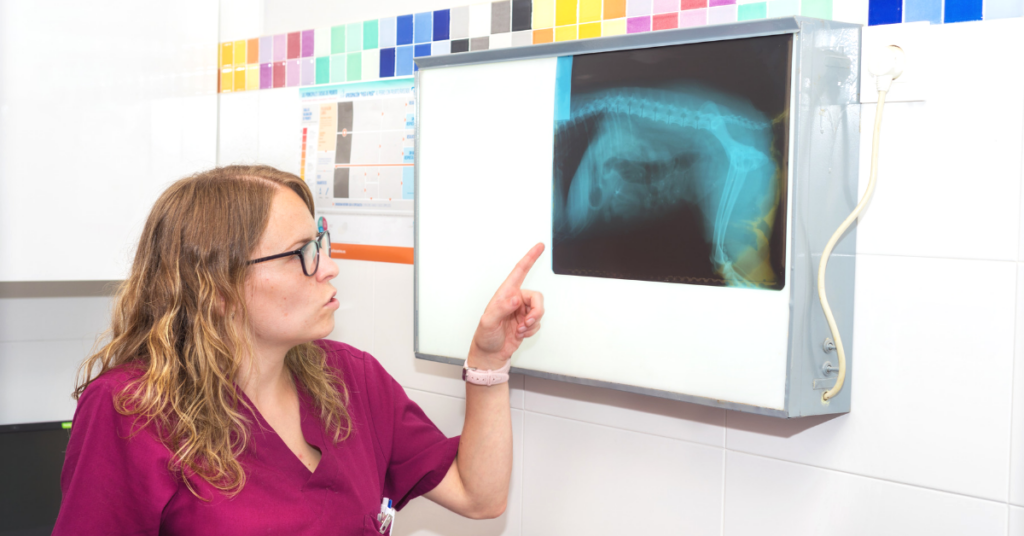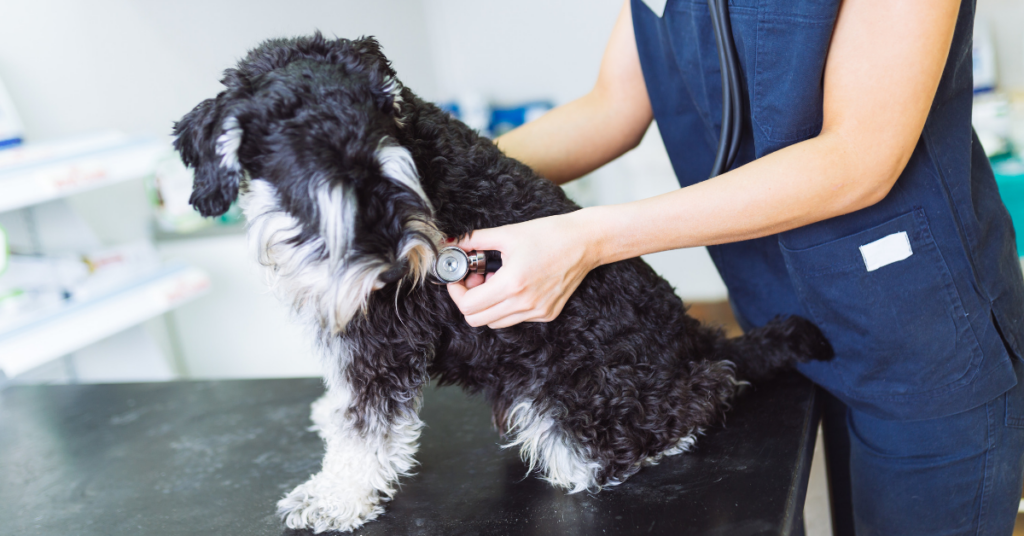Pyometra in Dogs: The Complete Guide
Reviewed by Lauren Cannon, DVM
Pyometra is a very serious, life threatening illness that occurs in female dogs, and must be treated quickly and aggressively.
This condition occurs mainly in unspayed females, affecting the uterus, but quickly leads to many other problems.
An immediate visit to the veterinarian is required as pyometra usually requires emergency surgery to remove the infected uterus.
Left untreated pyometra can cause a uterine rupture which can quickly result in the death of the pet.
What Is Pyometra?

Pyometra is a bacterial infection that causes the buildup of pus in the womb, causing an enlarged uterus and painful abdomen.
A secondary uterine infection that is a result of hormonal changes in the reproductive tract.
A uterus that continues to thicken due to elevated hormone levels is at risk of developing pyometra.
If the uterus continues to thicken it will reach a stage where it is unable to contract and expel any bacteria that has entered the area.
How Did My Dog Get Pyometra?

A dog that does not become pregnant during her heat cycle, risks the progesterone hormone levels to remain high.
If this continues over several cycles it leads to cysts developing, leading to a condition known as cystic endometrial hyperplasia.
The cervix under normal conditions keeps the path to the uterus tightly closed, avoiding the introduction of any bacteria.
However, when an animal is in heat the cervix relaxes in order to allow the sperm to make its journey to fertilize the eggs
Bacteria can be introduced at this time which under normal circumstances can be expelled by a uterus able to contract.
White blood cells that would normally protect against the bacteria are deterred from entering the uterus during this phase of the cycle.
The reason the white blood cells are deterred is to allow any sperm introduced into the uterus to do their job without being attacked.
With the uterine walls thickened due to cystic endometrial hyperplasia, the conditions are just right for bacteria to grow.
Symptoms of Pyometra

Signs of Illness and clinical signs of pyometra include lethargy, depression, fever, and lack of interest in food.
If the cervix does not close tightly (known as open pyometra) as it should, another sign will be the vaginal discharge of accumulated pus.
If the cervix is closed tightly (closed pyometra) then toxins from the bacteria will build up and can enter the bloodstream.
In the case of closed pyometra the dog will be uninterested in food, depressed, and show signs of listlessness; diarrhea and vomiting might also occur.
Toxins from the bacteria that have entered the bloodstream begin to block the kidney’s ability to retain fluid.
An increased thirst leading to excessive drinking is a sign for both open and closed pyometra.
Pyometra in your dog is a very serious medical condition that needs immediate treatment.
Diagnosing Pyometra

Early in the illness the dog may have a bit of vaginal discharge, but not show any other symptoms.
In the later stage of the illness the dog will be drinking excessive amounts of water, and be very ill looking.
If this animal has recently been in heat then it is very likely to be diagnosed as a dog with pyometra.
This will especially be the case if her abdomen is tender, and she has a vaginal discharge.
A blood test will reveal a high white blood cell count as well as an elevation of a protein associated with the immune system.
X-rays will show an enlarged uterus in the case of a closed cervix; if the cervix is open, any enlargement is minimal.
Ultrasound can also be utilized to differentiate between an enlarged uterus due to pregnancy as opposed to pyometra.
An ultrasound will show any additional fluid in the uterus, along with thickened uterine walls.
How to Treat Pyometra

The best treatment will be surgery to remove the uterus, and ovaries.
This surgery is especially straightforward in the early stages of the illness, and more complicated as the situation progresses.
Sick animals will require IV fluids before and after surgery along with antibiotics to reduce chances of secondary infections.
Most dogs are already quite ill by the time they are diagnosed, making most surgeries more complicated, with longer periods of convalescence and recovery.
However, without immediate surgery the chances of the animal’s survival is very low.
There are some medications that can be used in the case of owners trying to save a breeding dog.
But this approach is uncertain and very risky as the medications themselves have many side effects.
And in no way is recommended for a dog that is far along in the illness.
The long term results of the medication route are mixed, from the recurrence of the disease to compromising the animals future ability to breed successfully.
The best course of action is to rely on your veterinarian and the expertise they bring when deciding which direction to take.
When to See a Veterinarian

As always the minute you notice something is not right with your dog you should consult your veterinarian.
If you become aware that your pet is having any kind of discharge shortly after being in heat, it is a good time to call.
Any lethargy, disinterest in food, excessive drinking of water, and tenderness in the abdomen are all signs to give your vet a call.







